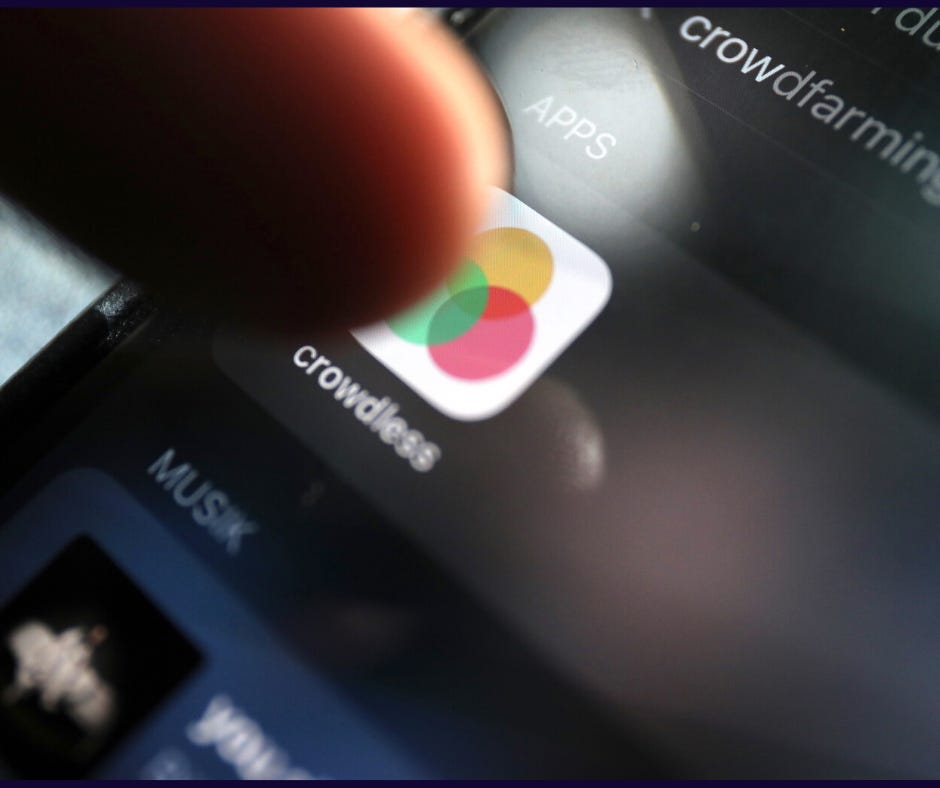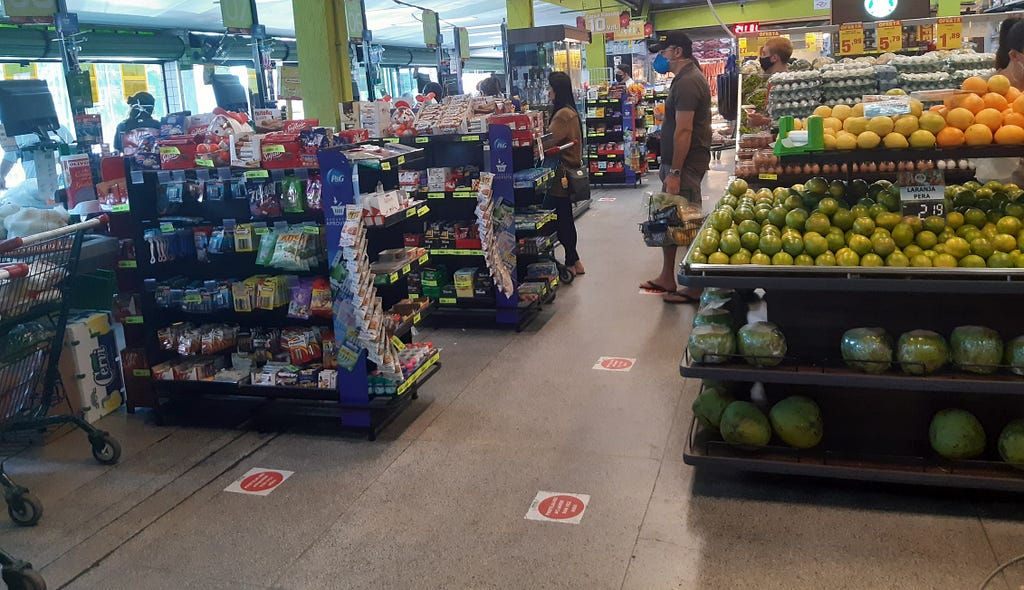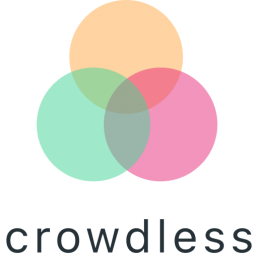Innovation is key to helping retailers and customers navigate through the new normal
by Talitha Loftus and Alex Barnes
As restrictions start to ease across the UK and crowds begin to gather, now more than ever businesses are relying on technology to support social distancing measures and ensure public spaces are kept safe.
As the COVID-19 pandemic sweeps across the world, we are seeing a new breed of services and new uses of technology emerge. A few weeks ago, the UK government announced a further reduction in social distancing measures enabling pubs, restaurants and hairdressers in England to reopen in early July. A positive step in the right direction, however, this decision doesn’t come without its challenges because as more doors begin to reopen the risk of infection becomes greater.
In a recent report conducted by RetailNext, figures showed a 14.9 percent increase in brick-and-mortar foot traffic for the month of June in comparison to May 2020. These results are encouraging and we look forward to seeing further growth overtime. However, one can’t become too comfortable when dealing with an unfamiliar virus such as COVID-19. Retailers need to be prepared and ensure they have the right tools, resources and strategies in place to prevent further spread.
“The current crisis should serve as a reminder to all retailers and consumer products and services companies that having a worst-case-scenario plan is an important part of critical strategic planning,” said Keith Jelinek, managing director in the retail practice at Berkeley Research Group, a global consulting firm.
Companies need to come together and look towards building innovative solutions to ensure public spaces are kept safe,“seeing the large numbers of people waiting in a queue to enter a shop has really surprised me and frightens me. We are seeing a resurgence of the virus and I’m very worried that we will see it here in the UK. In my local supermarket, the space between the aisles is tiny and hard to navigate. If you don’t use the one way system properly you will get too close to other people” said Adam from Oxford, a Crowdless customer.
To help build consumer confidence, brands need to pull together and ensure the right actions are being practiced to reduce the spread. Last month, RetailNext announced further enhancements to their occupancy solution and encouraged partnerships with companies such as Yoobic, sensalytics and more.
Without a doubt, innovation is the new necessity and apps like Crowdless optimise shopper experience by helping them to shop while respecting the social distance guidelines. Crowdless is a free app that offers shoppers supermarket crowd levels, in effect telling you how crowded stores are before you go. By using existing data sources, crowdsourced data and machine learning, Crowdless allows people to check in real-time whether a store is crowded before stepping foot in the door.

Apps such as this give consumers the confidence to re-enter stores with ease, “Our goal is to enable retailers and consumers to work together,” said Alex Barnes, co-founder at Crowdless. “Our users notify each other about how crowded stores are, which is a huge benefit to the community. This also supports the retailer, as it encourages users to discover new opportunities to shop at less crowded times”.
We are excited to see innovative apps such as Crowdless emerge in the market during these unpredicted times. If you would like to find out more about how the RetailNext Occupancy solution works, download the brief here. We also encourage you to download the free Crowdless app to know when it’s the perfect time to shop in-store!
Innovation is key to helping retailers and customers navigate through the new normal was originally published in Crowdless on Medium, where people are continuing the conversation by highlighting and responding to this story.
Community Ambassador Blog: Edilson - How a social distancing app helps people classified as “vulnerable” shop safely.
Edilson is a Community Ambassador for Crowdless in Brazil.

For me, one of the people classified as “vulnerable,” shopping in a crowded store brings an added risk of contracting the COVID-19 coronavirus.
My name is Edilson and I live in São Bernardo do Campo City, one of the largest cities in São Paulo State. If you know a bit about Brazil, you’ll be aware that the state of São Paulo is Brazil’s most economically productive and populous state. It accounts for more than one-fifth
of the national population. I work for a large company that sells technology appliances.
I was in a self-imposed lockdown even before the Brazilian government imposed the national lockdown. This is because I’m recovering from a disease so, when we were told to stay home it didn’t change my routine very much. In the beginning, I was worried about the whole situation but now I’m slowly adapting to this new way of living. Perhaps this is because I’m spending my time studying and preparing for the moment when I can get back to work. This makes me feel more relaxed about the lockdown rules.
The pandemic has affected my community in various ways. If you’re older than 60 and have caught the disease, you stay home. We’ve had a lot of difficulty with schools as they didn’t have time to prepare content for online home schooling and of course many people have become unemployed because of the pandemic. I’m afraid that it will take a lot of time to recover economically from this.
At the beginning of the lockdown in Brazil, I was surprised at how many people were going to supermarkets at the same time, even when there was such a great risk of becoming infected.
In the condominium where I live, neighbors have offered to shop for people who are vulnerable and who are at higher risk. Otherwise the alternatives to going to supermarkets are delivery services or asking help from volunteers who make purchases for people who are at risk. I’m very grateful for these kinds of gestures as they’re so important to save lives and reduce the risk of contracting the coronavirus.
Since I can’t leave the house due to my disease, my wife does our shopping and the shopping for our vulnerable neighbours. Being able to know the best time and place to shop — to go when it is less crowded makes the shopping much easier and less stressful for her. For example, we know that supermarkets will be crowded after pay day and on the day that people get their government benefits. But even if we don’t shop on those days, the capacity limit in our supermarkets is not always respected by managers, which creates queues. So, it is very important to know about the capacity before leaving home to shop. And to know this I looked for innovative solutions to solve this problem.
In search of information or an app that could help me, I found Crowdless, which offers such a solution. It’s really innovative since it allows people to interact by updating with real-time information on how crowded stores are.
I strongly recommend using the Crowdless app. Crowdless is part of the solution, because you participate and contribute to its accuracy and help people stay safe.
Download Crowdless on iOS or Android today: crowdlessapp.co/app.
Find out more crowdlessapp.co
Blog: How a social distancing app helps people classified as “vulnerable” shop safely. was originally published in Crowdless on Medium, where people are continuing the conversation by highlighting and responding to this story.
